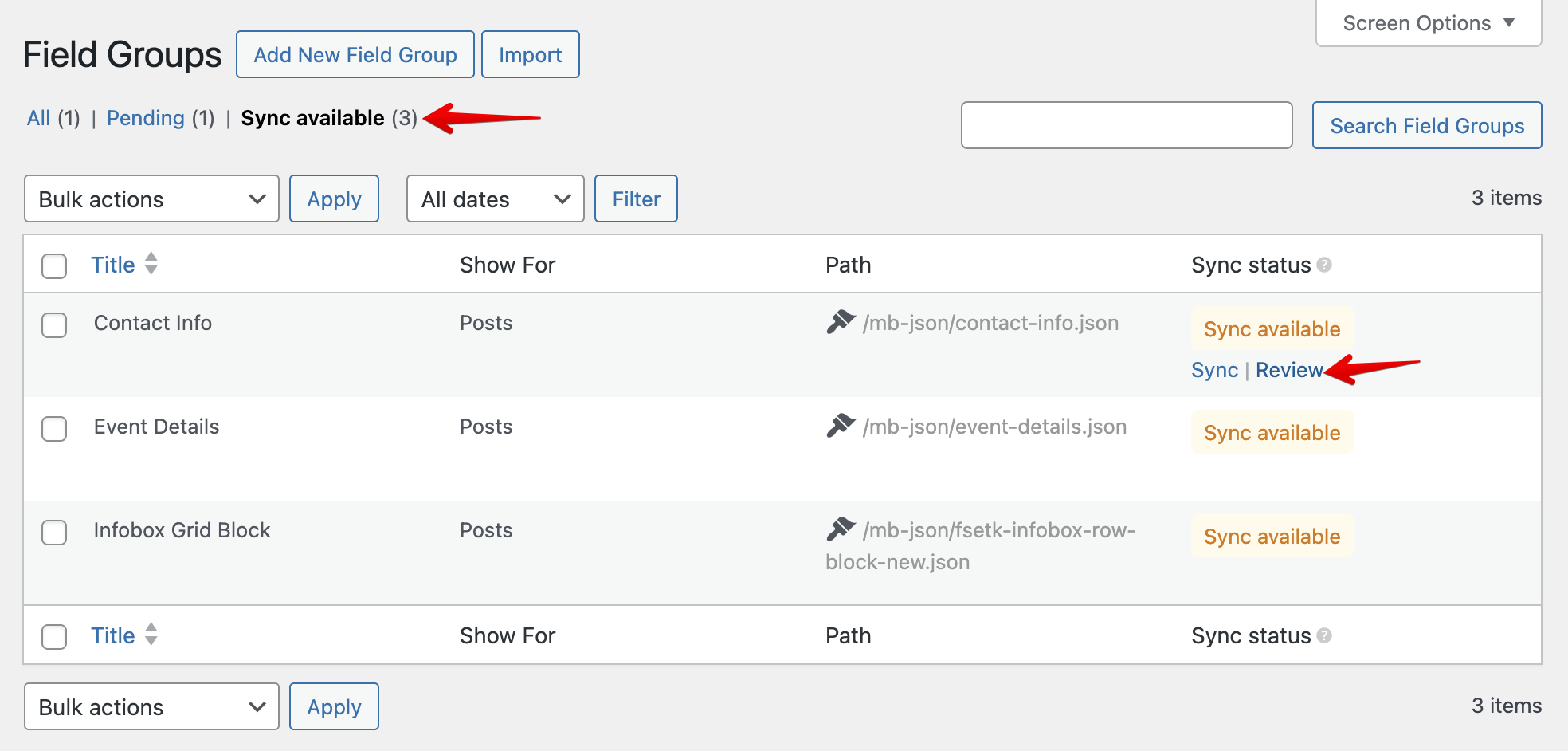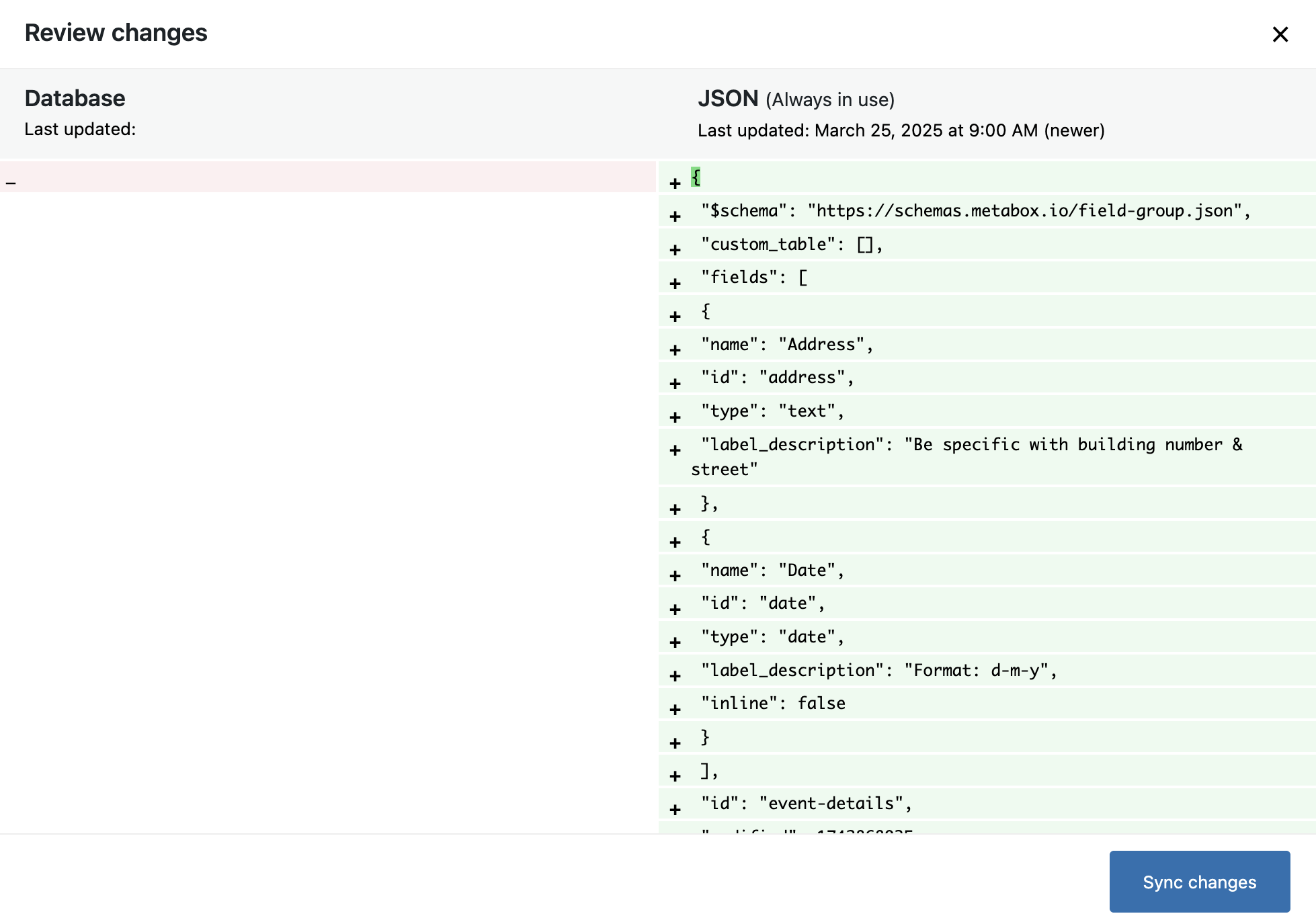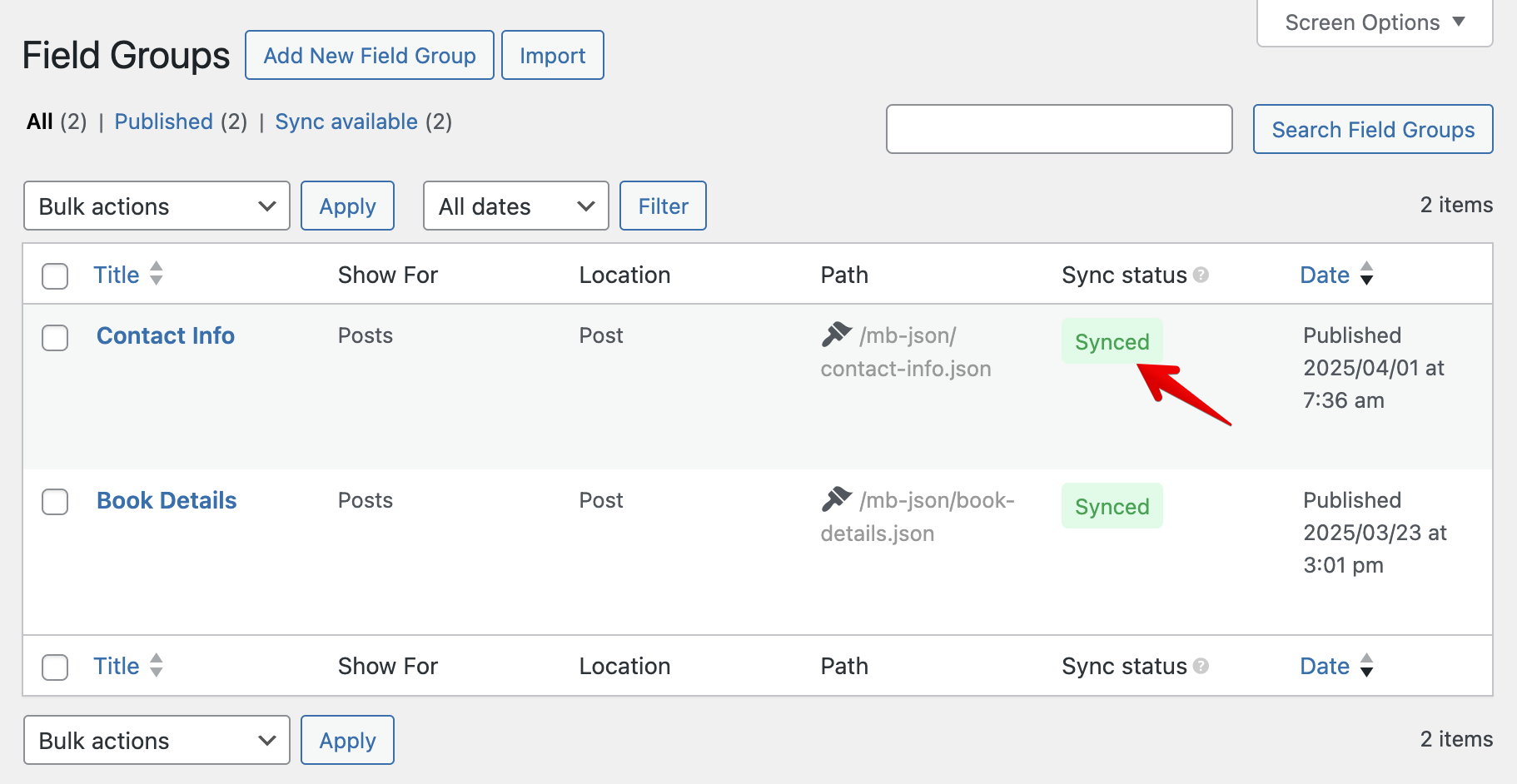Local JSON
Beside creating fields with PHP, you can also register custom fields with JSON. This way is more convenient and easier to manage the fields since you can put them in a separate file, use version control (Git), leverage caching, and better code editor support with JSON schema.
This feature is available in the Meta Box Builder extension and is included in both Meta Box Lite and Meta Box AIO.
How it works
To use local JSON to register custom fields, you need to create a new folder called mb-json field in your theme that is writable by the web server.
After that, you can put the JSON files in the folder and Meta Box will automatically load the JSON files and register the fields, no more database queries.
JSON format
The JSON format is the same as when you export a field group and is very similar to the PHP version when you creating a field group, except the $schema and modified attributes:
{
"$schema": "https://schemas.metabox.io/field-group.json",
"title": "Event details",
"post_types": "event",
"fields": [
{
"name": "Date and time",
"id": "datetime",
"type": "datetime"
},
{
"name": "Location",
"id": "location",
"type": "text"
},
{
"name": "Map",
"id": "map",
"type": "osm",
"address_field": "location"
}
],
"modified": 1739955432
}
We use a JSON schema so you can take advantage of the code editor's auto-completion feature (like in VSCode). In the JSON file, you need to set the $schema attribute as follows:
https://schemas.metabox.io/field-group.json
Syncing changes
Meta Box will automatically discover new or updated JSON files in the mb-json folder and display them in the Sync available tab, showing the status of the JSON files, where you can sync JSON to the database, so you can edit the fields visually, and then sync back to the JSON file.

Before syncing, you can also review the changes by clicking on the Review link.

When you change the content of a JSON file, and want Meta Box to detect the change to show the Sync available status, you have to increase the modified attribute in the JSON file. This attribute stores the last update time in timestamp.
After syncing, you'll see the field group in the admin list like this:

Then you can change the field group, add more fields or edit existing fields. You can save changes to the JSON file just by saving the field group in the WordPress admin. The JSON file will be updated automatically. Please note that deleting a field group in the admin will also delete the JSON file.
Syncing from JSON to the database has only one purpose: to edit fields visually, and then sync back to JSON files (or export to JSON file to save somewhere else). Meta Box will NOT load fields from the database (to avoid making unnessary queries), and use JSON files only.
Adding custom folders
By default, the plugin will look for the JSON files in the mb-json folder in the active theme. You can add custom folders to load JSON files by using the mb_json_paths filter. Here is an example:
add_filter( 'mb_json_paths', function( $paths ) {
$paths[] = '/path/to/your/folder';
$paths[] = '/path/to/your/folder2'; // Another folder
return $paths;
} );
Security
It's a good practice to hide the JSON files from the public. The easiest way to do that is adding index.php file to the folder. This way, when people try to access the folder, they'll see a blank page.
<?php
// Silence is golden.
